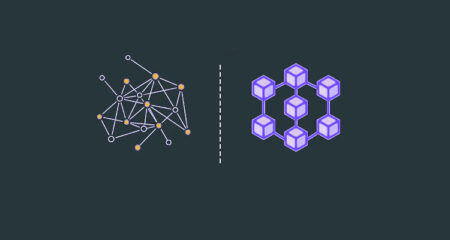Web2 To Web3: Why Move And How To Migrate


Web2 To Web3: Why Move
We live in the digital age, where things change at a blistering pace. What was considered the latest tech advancement yesterday could be replaced by something new today.
In the time that has passed since the early days of its popularity, the Internet has experienced a major leap forward. Around 25 years ago, the Internet consisted primarily of static, read-only sites. This first generation of the world wide web is referred to as Web 1.0 (Web1), which was replaced by Web 2.0 (Web2) in the mid-00’s — and this is what we’ve been using up to now. Web 2.0 welcomed user-generated content and introduced unprecedented ease of use and interoperability to Internet users.
However, some central authority entities gained a level of control over the world wide web, making decisions about what should and shouldn’t be allowed. This triggered the advent of Web 3.0 (Web3) — the next iteration of the Internet. Unlike the web monopolized by several major tech companies, Web 3.0 is decentralized, meaning that it’s built, run, and owned by users.
With Web2 as the current version of the Internet and many Web3 apps already existing in parallel, it’s safe to say that Web2 and Web3 can coexist for years. And while the Web2 vs Web3 dilemma doesn’t affect average Internet users as of now, it might be critical for businesses. In this article, we will provide reasons for changing Web2 to Web3 and dive a bit deeper into the technical side of a Web2 to Web3 shift.
Why move from Web2 to Web3?
Migrating your business apps or solutions from Web2 to Web3 can give you a number of benefits. Let’s take a look at some of the top ones you can expect to see.
Complete data ownership
Web3 provides its users with full ownership of their digital assets. Here, the contrast between Web2 and Web3 is easy to understand through the concept of a gaming app. When playing a Web2 game, all the items you buy in-app are linked to your account, and once the app owner removes your account, you lose these items. On the other hand, a Web3 game gives players complete control over NFTs they accumulate, allowing them to sell or trade NFTs whenever they want.
Decentralized payments
Web2 payment infrastructure can’t exist without banks and payment processors, leaving the unbanked population behind. Web3 allows users to transfer tokens directly in the browser, without any third party involved.
Greater security
Unlike the existing system, where data can be easily copied without its owner’s agreement, blockchain technology offers a higher level of security to web users. Even if data is altered or hacked, blockchain allows users to easily trace it back. In addition, you can have your Web3 app audited to make sure it’s 100% secure and hack-proof before it goes live.
Next-gen collaboration
As well as giving you full control over your data, Web3 creates a favorable environment for DAOs (decentralized autonomous organizations). A DAO is a novel management model with no boards or executives that allows for using tokens as shares. Technically, DAOs are agreed-upon smart contracts that automate decentralized decision-making.
Composability
While Web2 is characterized by limited API access, Web3 projects are open source, meaning anyone can build new decentralized applications on top of other projects. This translates into faster time to market and cost effectiveness.
No centralized control
Users of Web2 platforms are subject to censorship — user-generated content can be deleted if it doesn’t meet the platform’s rules. In a decentralized network, the authority remains in the hands of content creators.


Expert WEB3 Development
We build decentralized applications and smart contracts for a variety of uses.
How to convert Web2 to Web3
Moving a business application from Web2 to Web3 is a complex process that involves multiple migration tasks, including the OS, infrastructure, code, database, CMS, and platform. Project-wise, changing Web2 to Web3 consists of several steps:
- Requirements and strategy. For starters, the Web2 to Web3 migration experts gather detailed requirements, making sure they understand how your existing application works and developing a strategy to move it to the new environment.
- Business application assessment. Next, the migration specialists thoroughly analyze the existing application’s infrastructure and database system.
- Web3 application migration. After backing up the app’s database, Web3 developers start the migration process.
- Testing and deployment. Finally, the Web3 app is tested for bugs or other technical issues and is then deployed.
Technical aspects of moving from Web2 to Web3
When transferring applications from Web2 to Web3, companies should take note of the following aspects:
Data storage method
It’s possible to employ peer-to-peer solutions in Web3 just like you use a database in a traditional stack. Still, in Web3, blockchain technology is used, where data is replicated on multiple nodes within a decentralized network, and it is not the same as a database. Although blockchain stores data, it’s mainly transaction metadata.
Moreover, Web2 and Web3 applications have different data architectures. Web3 apps are based on user-centric data storage — storing data on a distributed network and giving all users access to it. Conversely, Web2 applications are application-centric, storing application-related data on their servers.
Given that, creating Web3 data apps is only possible by using several primitives:
- a network for fast data availability and mutability through a decentralized network
- a protocol for model-based data storage and retrieval
- a client to run CRUD operations in users’ stores at runtime
Because of this, Web2 to Web3 data migration means migrating from a simple data storage model to a decentralized method, where data ownership always belongs to users, and data can’t be altered or removed. Instead of using API or network calls to exchange data, you will have to query blockchain via smart contracts.
Wallet migration
Since Web3 uses decentralized currency, users need to move from a simple payment gateway to a crypto wallet when migrating from Web2 to Web3. Web3 wallets provide a gateway to multiple blockchain-based crypto apps, including DeFi, P2E, and NFT. These apps can be accessed through a desktop browser that will alert the user of any sharing activity. Alternatively, users can leverage third-party wallet libraries or APIs.
Web3 transactions are made using cryptocurrency, so the buy/sell flow in the new app will be different from its Web2 version. While in Web2 a central authority remains in full control over transactions, in Web3 everything happens in a decentralized way.
User flow
Before migrating an app from Web2 to Web3, it’s crucial to realize that user interaction is higher in Web3 than in Web2. This is because users interact with Web3 through smart contracts every time they need to sell, buy, transfer, or make a purchase with tokens.
Transactions to be stored when migrating from Web2 to Web3
- Minting of tokens. Once a user creates a token, the token needs to be stored in Web3 along with details on its owner.
- Transfer of tokens. When a user buys or sells tokens, they need to be stored with all the details on its previous and current owners.
- Balance transfer. If balance is transferred between users, all details, including sender and receiver data and the amount transferred, should be stored.
What’s next?
With the ultimate transparency, security, and decentralization it offers, Web3 can bring business applications to the next level. If you seek to gain your edge in this intensely competitive business environment and future-proof your application, this could be your sign to migrate from Web2 to Web3.
If you’re looking for trusted Web3 developers to help you with your Web2 to Web3 shift, EvaCodes has you covered. Our extensive expertise in blockchain and Web3 allows us to ensure a smooth transition of your app.
FAQ
Web2 vs Web3: What’s the difference?
Although Web2 and Web3 are similar technologies, they do differ significantly, with Web3 having some decisive advantages. While Web2 is owned and controlled by centralized entities, the ownership of Web3 belongs to its builders and end-users. Next, Web2 transactions are impossible without intermediaries — banks and payment systems. In contrast, Web3 utilizes cryptocurrencies and the decentralized protocol approach to enable peer-to-peer transactions with no third parties involved. Additionally, Web3 offers greater security and enhanced connectivity.
Can Web3 completely replace Web2?
In theory, it can, but Web2 and Web3 will likely coexist for years, like Web1 and Web2 do today. Yes, Web1 is still here — you can come across “read-only” pages that contain only static text and images like in the Internet’s early days.
And although shifting entirely from Web2 to Web3 is unnecessary and will take time, Web3 can solve some of the major Web2 challenges. It can return rights to content creators, decentralize monopolies that control the web, such as Google, Meta, or Microsoft, and enable secure and transparent transactions. Existing in parallel with Web1 and Web2, Web3 will decentralize the Internet and give opportunities to everyone who wants to have more control over their data and assets.
How do I transition to Web3?
Web3 is a relatively new technology, so DIYing your transition can be a challenging task. The best way to ensure a smooth and hassle-free transition to Web3 is by partnering with a trusted Web3 company.
How much does it cost to move an application from Web2 to Web3?
The cost of Web2 to Web3 migration services can vary a lot, depending on many factors, such as your Web2 business application type and complexity, the exact migration needs, built-in security features, time needed to complete the project, the Web3 team size, and whether you want to include post-launch maintenance and support services. For an accurate estimation, you need to connect with your service provider.
Written by Vitaliy Basiuk
COO & Co-founder at EvaCodes | Blockchain Enthusiast | Providing software development solutions in the blockchain industry





